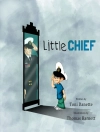Breaking through the boundaries of traditional psycholinguistics textbooks, The Psychology of Language: An Integrated Approach takes an integrated, cross-cultural approach that weaves the latest developmental and neuroscience research into every chapter. Separate chapters on bilingualism and sign language and integrated coverage of the social aspects of language acquisition and language use provide a breadth of coverage not found in other texts. In addition, rich pedagogy in every chapter and an engaging conversational writing style help students understand the connections between core psycholinguistic material and findings from across the psychological sciences.
Cuprins
Chapter 1: Animal Communication and Human Language
Section 1.1: Animal Communication Systems
Section 1.2: Human Language
Section 1.3: Evolution of Language
Section 1.4: Living Fossils
Chapter 2: The Science of Language
Section 2.1: Scientific Method
Section 2.2: Experiment Design
Section 2.3: Behavioral Techniques
Section 2.4: Language and the Brain
Chapter 3: Speech Perception
Section 3.1: Auditory Perception
Section 3.2: The Speech Stream
Section 3.3: The Development of Speech Perception
Section 3.4: Theories of Speech Perception
Chapter 4: Speech Production
Section 4.1: The Vocal Tract and the Production of Speech
Section 4.2: Speech Areas of the Brain
Section 4.3: Models of Speech Production
Section 4.4: Development of Speech Production
Chapter 5: Words
Section 5.1: Anatomy of a Word
Section 5.2: How Words Are Learned
Section 5.3: How Words Are Stored
Section 5.4: How Words Are Retrieved
Chapter 6: Sentences
Section 6.1: Sentence Structure
Section 6.2: Comprehending Sentences
Section 6.3: Producing Sentences
Section 6.4: Learning Syntactic Structure
Chapter 7: Discourse
Section 7.1: Conversation
Section 7.2: Narrative and Reference
Section 7.3: Anaphora and Inference
Section 7.4: Development of Discourse Abilities
Chapter 8: Reading and Writing
Section 8.1: Writing Systems
Section 8.2: Cognitive Processes in Reading
Section 8.3: Development of Reading Skills
Section 8.4: Cognitive Processes in Writing
Chapter 9: Bilingualism
Section 9.1: The Bilingual Experience
Section 9.2: Organization of the Bilingual Mind
Section 9.3: Cognitive Benefits of Bilingualism
Section 9.4: Second Language Acquisition
Chapter 10: Signed Language
Section 10.1: Sign Language Communities
Section 10.2: Characteristics of Signed Languages
Section 10.3: Language Acquisition in Deaf Children
Section 10.4: Deaf Culture
Chapter 11: Language Development Across the Lifespan
Section 11.1: Infancy
Section 11.2: The Preschool Years
Section 11.3: The School-Age Years
Section 11.4: Adulthood and Aging
Chapter 12: Language, Culture, and Thought
Section 12.1: Words and Thought
Section 12.2: Grammar and Thought
Section 12.3: Figurative Language
Section 12.4: Taboo Language
Chapter 13: Language and Technology
Section 13.1 Cell Phones
Section 13.2: Texting
Section 13.3: Natural Language Processing
Section 13.4: Artificial Intelligence
Despre autor
David Ludden is professor of psychology at Georgia Gwinnett College near Atlanta. He earned his Ph.D. in Cognitive Psychology at the University of Iowa in 2002. Although a psycholinguist by training, he has also had a secondary interest in the history of psychology from early in his career. His first faculty position after graduation was at a small liberal arts college where he was responsible for teaching half of the psychology curriculum. This experience greatly expanded his appreciation for the enormous diversity of viewpoints within the field of psychology. In 2014, he moved to Georgia Gwinnett College, where his main teaching responsibility is the capstone History and Systems of Psychology course, which thus provided the impetus for writing this book. A History of Modern Psychology is his second book, and it was preceded by The Psychology of Language in 2016, also published by SAGE. David Ludden lives in the greater Atlanta area with his wife and intellectual companion of thirty years, Yawen Ludden, who is a musicologist. She fills his life with great music, wonderful food, and an inimitable joie de vivre.












